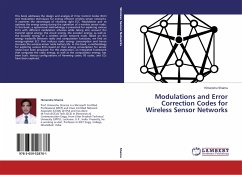Memory is an electronic storage device, and all electronic storage devices have the potential to incorrectly return information different than what was originally stored. Some technologies are more likely than others to do this. DRAM memory, because of its nature, is likely to return occasional memory errors. DRAM memory stores ones and zeros as charges on small capacitors that must be continually refreshed to ensure that the data is not lost. This is less reliable than the static storage used by SRAMs. There are two kinds of errors that can typically occur in a memory system. The first is called a repeatable or hard error. In this situation, a piece of hardware is broken and will consistently return incorrect results. A bit may be stuck so that it always returns "0". The second kind of error is called a transient or soft error. This occurs when a bit reads back the wrong value once, but subsequently functions correctly. Such kind of error , we can detect and correct.
Bitte wählen Sie Ihr Anliegen aus.
Rechnungen
Retourenschein anfordern
Bestellstatus
Storno








